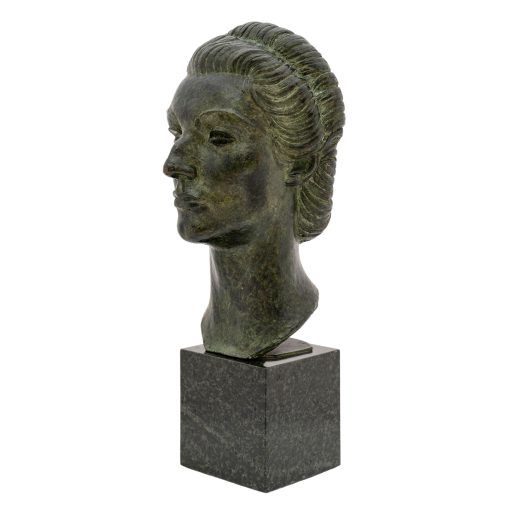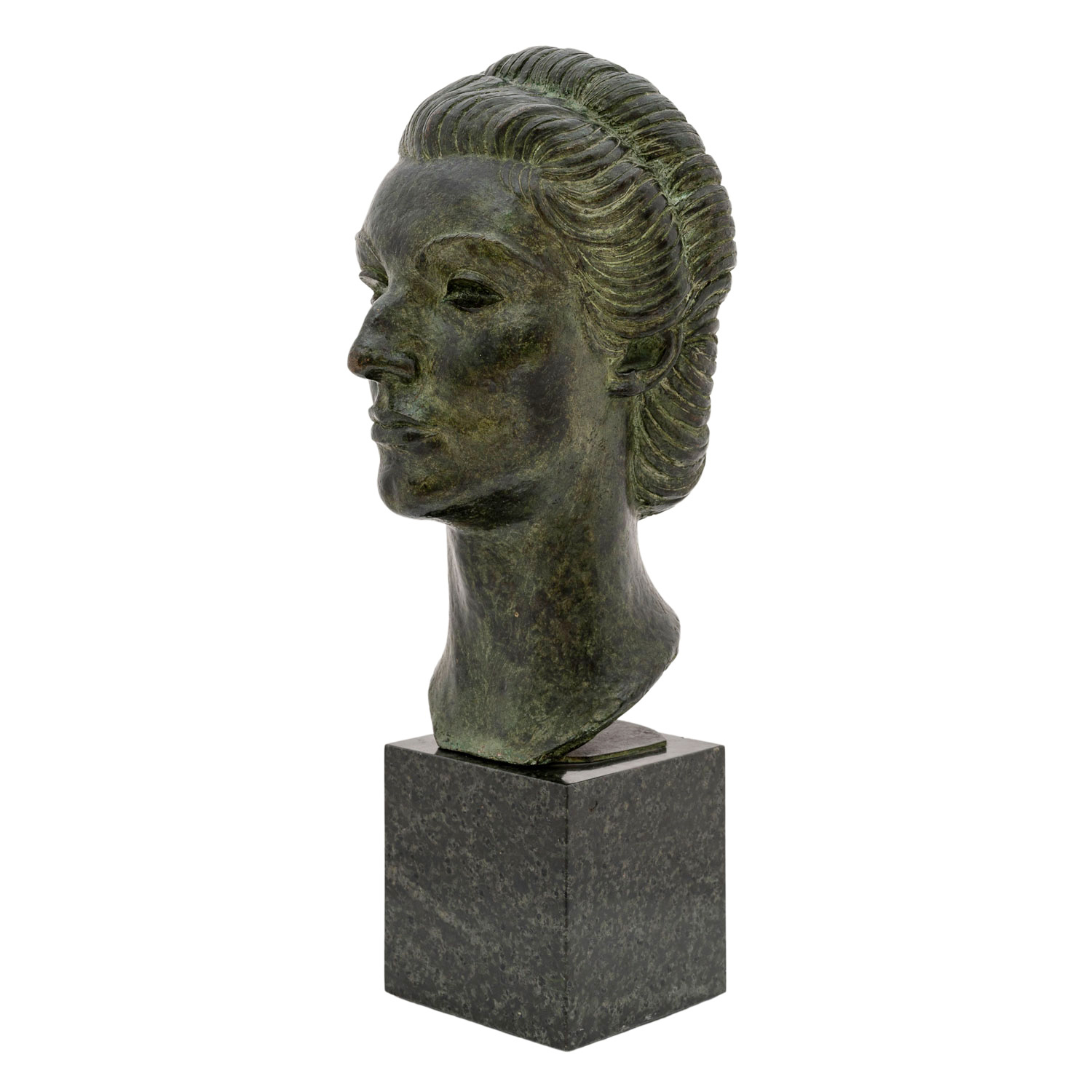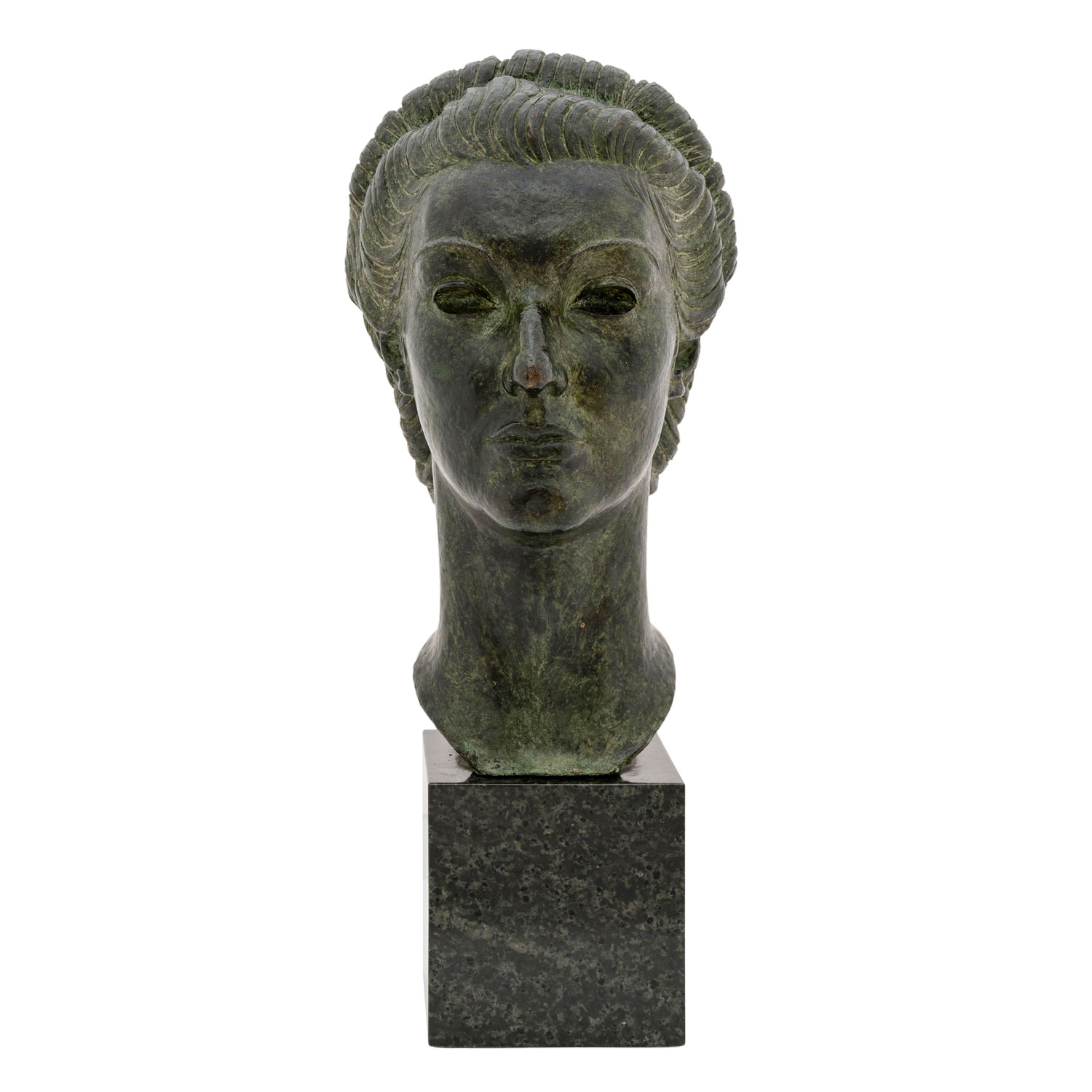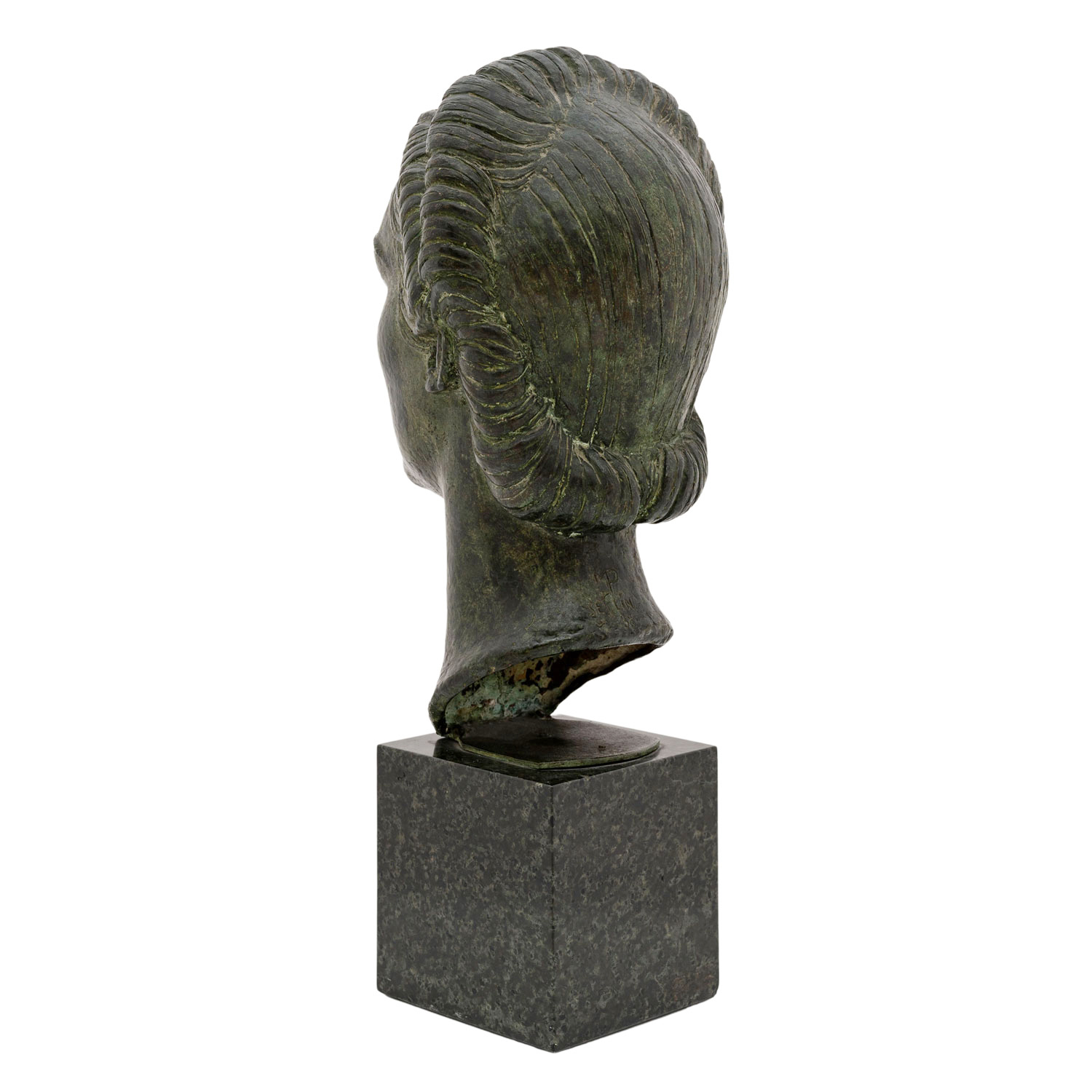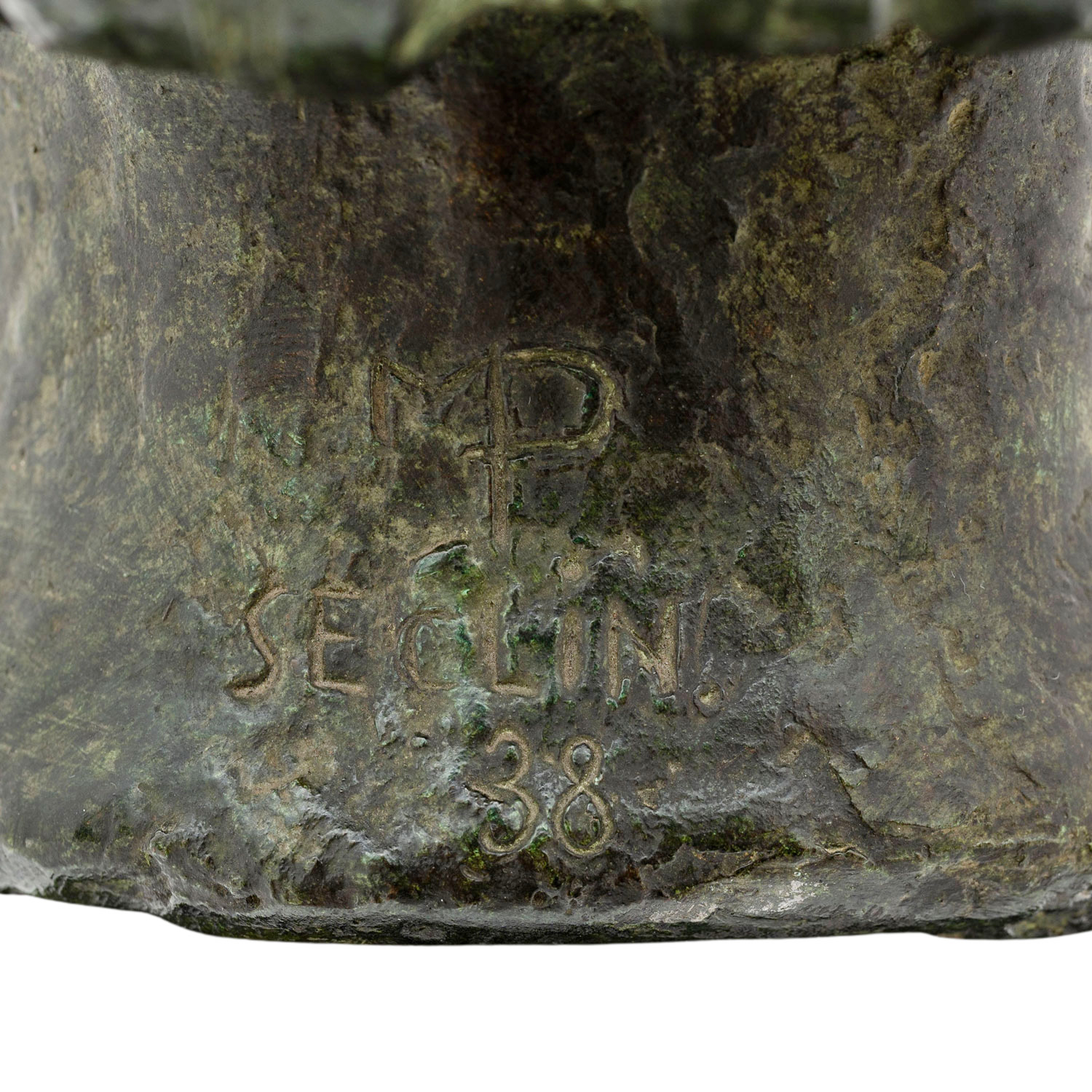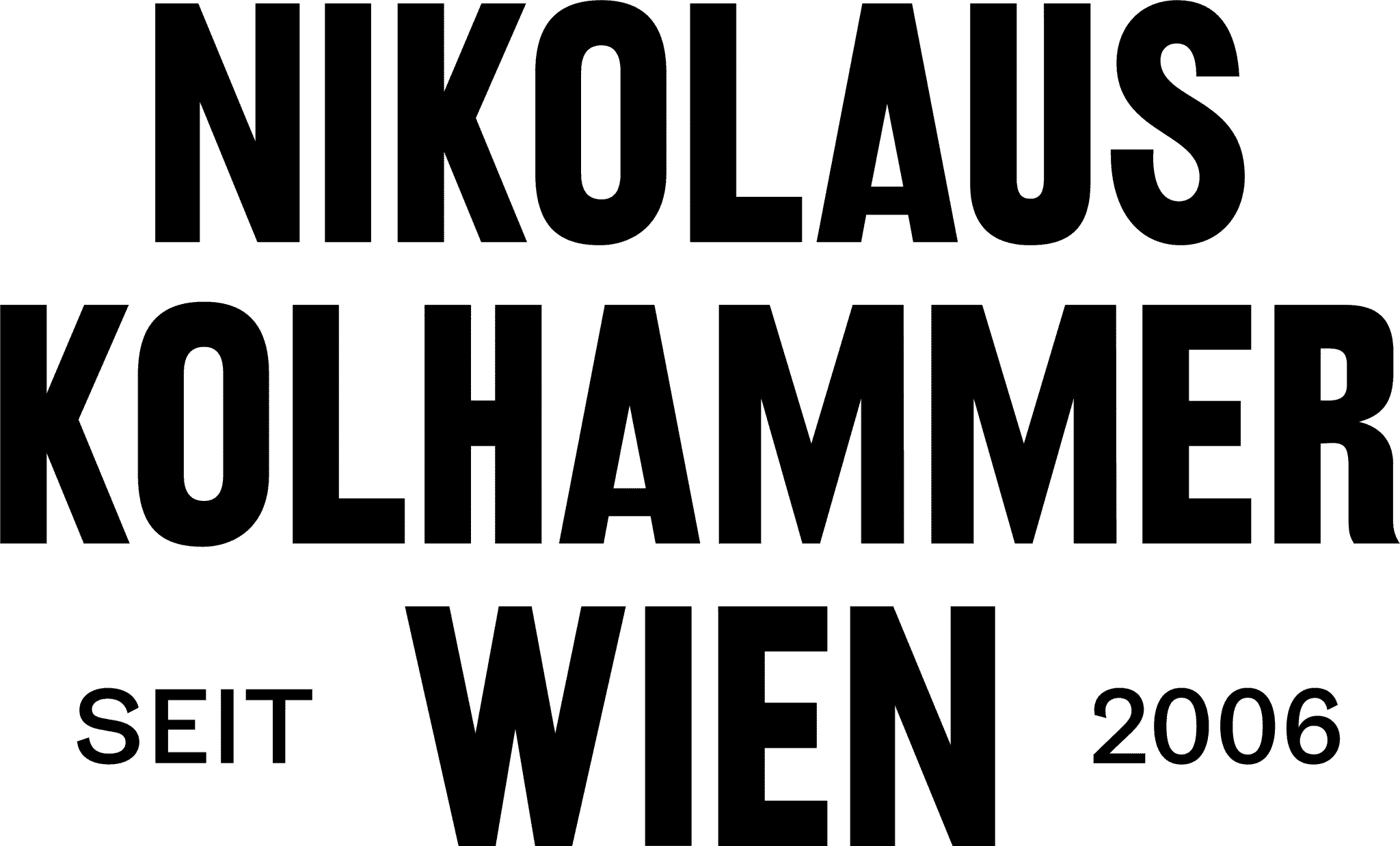Bust of a woman “Seclin” Michael Powolny 1938
Bust of a woman “Seclin”, Michael Powolny, 1938, Bronze, cast, mounted on a base of green granite, marked
Description
Michael Powolny was one of the most influential architects and designers of the Viennese Jugendstil. His works are exhibited in well-known museums around the world and are highly popular among collectors. Powolny was born in 1871 in Judenburg, Styria, and is considered a pioneer of Austrian ceramics at the beginning of the 20th century. In 1905, he co-founded the “Wiener Keramik” with Berthold Löffler, which formed a sales association with the Wiener Werkstätte in 1907 and merged with Franz Schleiß’s workshop in 1912 to become the “Vereinigte Wiener und Gmundner Keramik.”
The present bronze bust was likely a commissioned work by Powolny and created during the time when he was a member of the Viennese Secession and a teacher at the Vienna Women’s Academy. In his works, Powolny often drew on stylistic influences from earlier epochs, which can be clearly seen in the present bronze bust. The portrait of a woman is marked on the back of her head with “MP,” “Seclin,” and “38”. The finely detailed execution of the hairstyle, hair strands and the characteristic facial features of the portrayed woman is highly impressive and showcases his craftmanship as a masterful sculptor.
Artist
Michael Powolny (Judenburg 1871 – 1954 Vienna) is one of the most famous ceramic artists of the Viennese Jugendstil. After his apprenticeship as a potter, he studied at the Vienna School of Applied Arts, where he also taught later on. He soon became a part of the inner circle of the Viennese Secessionists and was involved in the designing of important “Gesamtkunstwerke” (total works of art) in the spirit of the Wiener Werkstätte; for example, the legendary Cabaret Fledermaus in Vienna or the Palais Stoclet in Brussels. In 1905, together with Berthold Löffler, he founded the "Wiener Keramik", whose products were distributed by the Wiener Werkstätte. In 1912, the “Wiener Keramik” merged into the "Vereinigte Wiener und Gmundner Keramik", which continued to produce designs by Powolny and Löffler. Many of Powolny's large-format designs were also produced by the Wienerberger company from around 1914 onwards (sculptures, tiled stoves, architectural elements). In the decorative arts of Jugendstil, the name Powolny is associated in particular with the Secessionist figurines (Schöne Helene) and the popular seasonal putti. With his childlike, cheerful putti, Powolny had a decisive influence on the aesthetics of decorative sculptures of Viennese Jugendstil. Powolny also designed large figural ceramics, namely for the Stoclet Palace or the Dianabad. As a designer, Powolny also created glass objects, for example for the glassworks Johann Loetz Witwe or the traditional Viennese company J. & L. Lobmeyr. Today, Powolny’s imaginative and decorative sculptures as well as glass objects can be found in Jugendstil collections of important museums of applied arts, such as the MAK in Vienna.
Inquiry
By submitting the inquiry form, you agree to the use of your data for this inquiry. Privacy Policy
